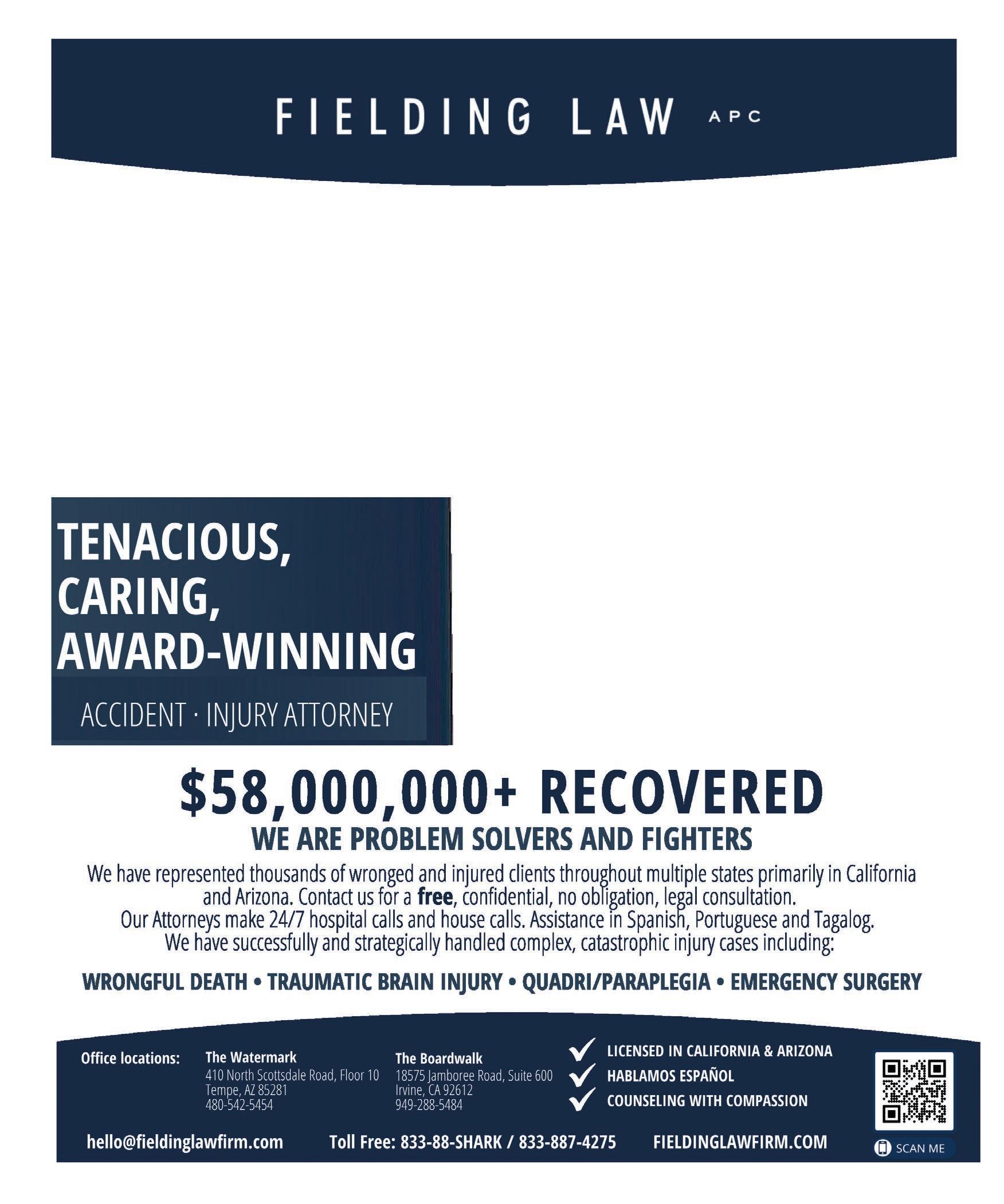Guy Alvarez

Wayne Pollock
Law

Guy Alvarez

Wayne Pollock
Law
At Bentley & More LLP, we provide aggressive legal representation to consumers and employees across California. Our attorneys are fierce litigators with decades of experience advocating for our clients. While we are effective in resolving many kinds of conflicts outside of litigation, we have a proven track record of fearlessness in taking matters to trial and beyond.





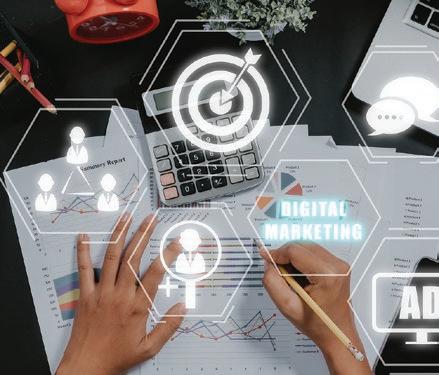



You cannot simply run a digital marketing campaign for your law firm and then leave it alone. You need to pay attention to the results, including return on investment (ROI), to determine whether the campaign was a success. Information related to ROI can also help you figure out whether you should continue running the campaign as-is or make some adjustments that could improve its effectiveness. Data-driven digital marketing campaigns can also help legal marketers prove the value of investing in digital. The following techniques can help you measure your law firm’s ROI on digital marketing campaigns.
For every single digital marketing campaign that your law firm executes, you should set up a tracking URL. You can easily add various tracking parameters to the URL that is part of your campaign. This is done by adding the parameters to the end of the standard URL. If, for example, your digital marketing campaign on social media directs users to your Contact page, the Contact page’s URL would have additional tracking information, making it longer.
These tracking URLs can automatically give the information to your chosen system for tracking, including a CRM. Urchin Tracking Module (UTM) is the most common tracking URL system. It lets you track the campaign source, campaign source medium, campaign content, and campaign term. Google even has its own tool that lets you easily add these tracking parameters.
Most CRMs include the ability to build a form that you can customize with various fields. Some of these
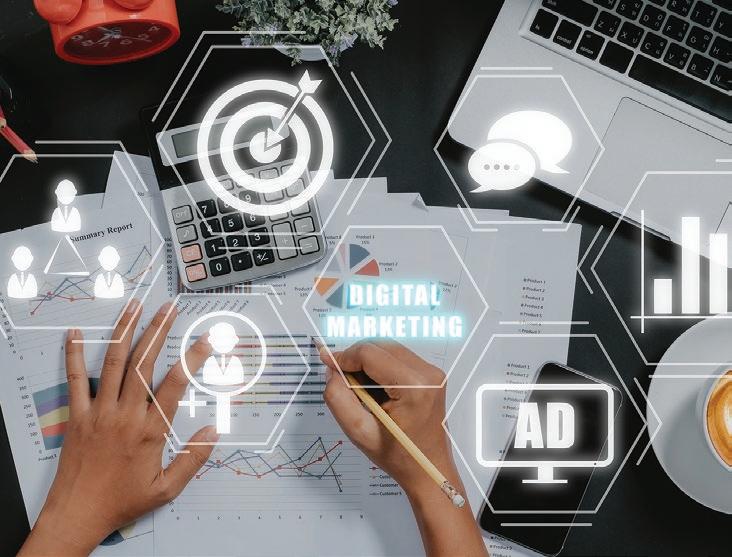 by Guy Alvarez
by Guy Alvarez
forms will also be able to use and store the tracking URLs within the record of contact. Alternatively, you can use something like Gravity Forms, which is simple to configure and achieves the same goal with fewer complications. Essentially, Gravity Forms allows you to add fields to the form that are hidden and include the campaign tracking parameters.
Do not limit the information you track related to your marketing campaign to just URLs. Your campaign is also likely to include a phone number for your law firm which can and should also be tracked. There are numerous third-party integrations for phone tracking. Zapier, for example, can automatically update or create a contact in the CRM via a Zap. The phone tracking system can pick up your lead source when a potential client calls thanks to a tracking phone number combined with a tracking URL that sends visitors to the page with the number.
The only thing to keep in mind is that phone tracking tends to be more expensive. There is typically a base fee per month plus fees for every number you track. As such, you may want to stick to manually tracking the source of phone leads, and having your team ask callers.
Once you have your Gravity Forms and tracking URLs set up, you need to ensure that the data has a good way of getting to your CRM. Simply put, if someone visits your law firm’s website and submits a form, the CRM will automatically update an existing contact or create a new one. There are various tools that can do this for you automatically, including Zapier.
The best way to measure your campaign’s ROI is to combine all of the above with optimal use of your CRM or other software. A good CRM should let you define various expenses for the lead sources. This should include the option of both one-time expenses and recurring ones. You should also make it a point to register new clients in your CRM or similar software.
A big part of marketing success is being able to understand your audience and their wants and desires. Start by building an ideal client profile. This will help you determine who exactly your ideal client is, what their wants and desires are, and build out specific attributes about them. That’ll help you determine which paths to take (such as demographics, job titles, personality traits, etc.). Once you have your personas determined, you can take a look at your current efforts and determine if they fall in line with what your audience wants. So, if you determine your ideal client is most active on LinkedIn due to their age group and professional title, and you’re currently most active on Instagram, it’s time to restrategize.
What’s a better way to learn what your audience wants than to ask them? You can easily create professional surveys using a tool like Survey Monkey and send them out to your contacts. Ask them anything you feel will help you get a clearer path with your marketing strategy. (Ex. If you’re a personal injury lawyer, try asking your audience, ‘What’s your most pressing concern when it comes to filing a personal injury lawsuit?’)
Social listening is the act of monitoring social platforms and analyzing social media content that’s relevant to a brand’s industry. Try joining relevant industry social media groups and searching relevant hashtags to see what is popular. This is a great way to see if not just your social media content is aligned
with what your audience wants to see, but also what topics, in general, are interesting to them most. Use this list of topics to determine blogs, webinars, email campaigns, etc.
The data you garner from measuring your ROI will tell you a lot, but you can also learn even more from one of the latest data technologies—intent data. Intent data examines the behaviors of users to determine what topics interest them most and where they are in the buyer’s journey. This is a great way to understand what content users want to consume at each stage of the buyer’s journey and create content that more closely aligns with users’ preferences. Not only that, but it cuts back on costs incurred when you waste money on content that won’t convert.
SEO is great, but as we all know, it can be a timeconsuming process with very little return at first. This isn’t to say that law firms should throw out their SEO strategy (continue to commit to SEO, it’s a long-term strategy, and over time you can garner the returns you want); however, in the meantime, you can choose to invest in a more controlled strategy. Consider investing in paid search or paid social media advertising. The setup process allows you to set specific budgets that will align with your lead generation goals.
Once you have a clearer idea of the ROI for your digital marketing campaign, you should be able to make adjustments that let you use your current campaign to its full advantage n
Guy Alvarez is the founder and Chief Engagement Officer. Guy is intimately familiar with all aspects of the professional service firm. First, he worked as a law firm associate. Later, he joined ALM Media where he built websites for some of the largest US law firms. After ALM, Guy honed his skills while running KPMG’s Global Digital Marketing group. Learn more at www.good2bsocial.com.

Associal media marketing continues to grow in popularity, a question we often get asked by our clients is if posting on social media helps SEO. Read on to learn the answer to that question and learn more about the impact that posting on social media has on your SEO efforts.
So, does posting on social media help SEO and your organic rankings? In short, the answer is no—however, posting relevant links from your website to social media can help not only boost your brand awareness but can drive traffic to your website as well. In fact, according to a study by Hootsuite and We Are Social, there are currently over 4.2 billion active users on social media worldwide. This represents a significant potential audience for businesses that are active on social media. In short, social media—while it does not have a direct impact on SEO—is a key asset in any digital marketing strategy.
Investing your time in social media efforts while also investing in SEO can have a positive impact on your overall online presence. In fact, social media efforts support SEO in many different ways including:

Have you ever done a branded Google search and had social media profiles come up in the results? I know I have! Well, if you have a strong social media presence, your profiles on those platforms may rank well in search results for your brand name or other relevant keywords. This can lead to increased visibility and potentially increase the traffic coming to your website.
As mentioned previously, social media posts can drive traffic to your website. In fact, when you post content on social media, it can be shared by your followers and potentially reach a wider audience. If this content includes a link to your website, it can drive traffic directly to your site and even potentially improve your local search rankings.
In addition, posting consistently on social media can help increase your visibility. With billions of people on social media sites, the more you post, the more eyes you can get on your posts.
Going back to the point mentioned previously, a strong social media presence can help you rank higher for branded terms and thus increase your overall visibility online.
Another way social media affects SEO is by increasing brand recognition. Essentially, the more channels you can have your name on, the more people will start to recognize your brand. So, if you are consistently posting on, say, Facebook, Twitter or LinkedIn just to name a few, people will begin to recognize your brand more and use those branded terms to find you online. Essentially, it can increase the branded organic traffic that comes to your website in a positive way
Social media affects SEO by increasing the lifespan of posts. For example, say you recently wrote an article that was seasonal as in having something to do with the winter season. Well, social media can help increase the lifespan of this post and help make it relevant again when a year passes and you reshare the article link on your social media profiles. This brings relevancy back to the article even though it was posted a while ago and, in the case of our example, a year ago, thus increasing the lifespan of the post by another year. This same method can be used each year by simply sharing the seasonal article on your social media profiles during the time of year it is most relevant.
Lastly, social media affects SEO by giving you the potential to gain more backlinks. For example, the more places you share your articles, the more people will see that article. The more people that see your article, there is greater opportunity for someone to discover it and even link back to it and as you may already know, backlinks are an extremely important part of any long-term SEO strategy.
To reiterate, social media is not a ranking factor when it comes to SEO; however, posting consistently on social media and having a strong social presence can help your business in a variety of ways. n
Taylor Tobey is a Digital Strategist at 9Sail. Taylor has a passion for digital marketing and is excited to be working with the 9Sail team and its clients. Outside of work she enjoys going to the beach, playing softball, and spending time with family and friends. She earned her MBA in Marketing from Fairleigh Dickinson University.




Anumber of factors continue to transform the legal industry, including: a more sophisticated legal services buyer as experienced partners switch sides to corporate law departments, rates creeping up without added value being delivered, and increased vigilance by in-house teams over legal department spending. While many firms have been able to raise profits per partner by cutting costs, revenues have generally not increased anywhere near the revenue gains we witnessed a few years ago. For these reasons, we are seeing an increasing interest on the part of law firms in sales to drive revenue—both with new and existing clients.
Everyone has heard the familiar commercial sales wisdom that it is easier to increase revenue from existing clients than to obtain new clients. This adage is true in law firms as well, and many firms are trying to find new ways to get closer to their best clients in order to build revenues from existing services, crosssell into new areas at client organizations, and build advocacy into these relationships for referrals to other clients. Client research can play a critical and necessary role in this process. In our interviews with key decision-makers in corporate law departments and on the business side of these organizations, they tell us over and over again how important it is that their law firms understand their business issues, including their goals, their industries and the nuances of their customer and client markets. This relationship element becomes a critical piece of keeping clients loyal and happy and client research helps relationship lawyers speak to their clients about their business issues. Further, client research uncovers new ways that a law firm can address clients’ legal needs, providing important avenues for cross-selling and expanding relationships.
Despite the critical role that client research can play in expanding relationships and therefore revenue, many firms struggle with how to bring together the right information in a way that will be helpful to lawyers who are tasked with building the relationship. The library provides information on the company, business development adds in the competition piece along with perhaps client interview data and finance has yet another perspective based on the profitability of various types of matters the firm has done in the past with the client.
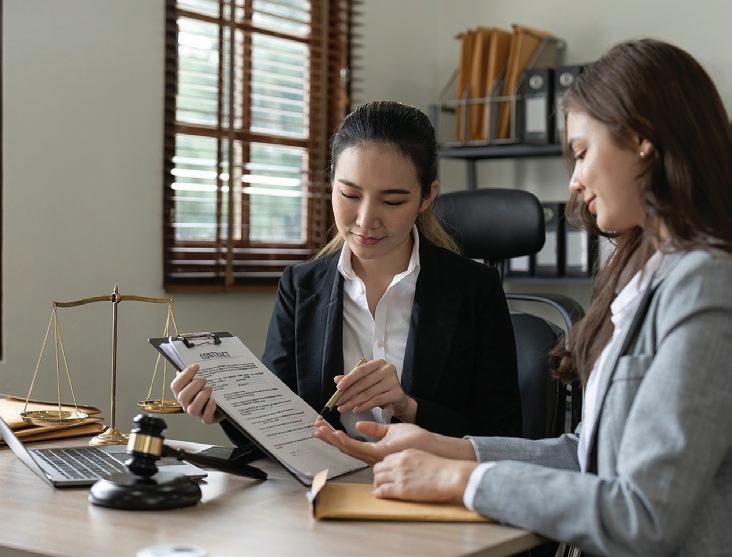 by Silvia Coulter
by Silvia Coulter
Often these reports are not fully integrated, and partners are left with a lot of data, making it difficult for them to discern where they should be focusing attention. Partners may not have the patience to sift through the information coming in different formats from different functions and perspectives to figure out the critical pieces to understanding the client’s business and industry and the potential legal challenges they may be facing.
Thus, the need for busy partners to have a brief, concise, informative package of information as a business development support tool is clear. But one of the challenges for firms is to determine who is in the best position to integrate data from the various departments. If a firm has a client team initiative, for example, a designated client team member is often in a good position to collect and integrate the various components. Regardless of what part of the organization is tasked with this activity, it is important to clearly state accountabilities for the report generation, particularly since it often requires crossing through organizational silos.
We propose a methodology to prepare an integrated partner briefing packet designed to assist partners with understanding (1) the firm’s goals with respect to the client, (2) the client’s business, (3) the state of the current relationship, (4) the competition, and (5) key opportunities. While this approach takes time to prepare, in our experience, the return on effort can be immense. In the following paragraphs, we describe this methodology in more detail.
One thing that often becomes immediately clear when you start collecting data for a partner briefing packet is that you have far more information than you can possibly use to create a coherent and compelling story. For this reason, the very first activity before you collect any data at all is to clearly define what the firm would like to accomplish through this process. For instance, is this a very good client of one practice group that you would like to try and cross-sell into other parts of the firm? Or did the client recently get acquired by a firm with whom you have no relationship and so you will need to sell
your firm into a new situation? Is the relationship stagnating and you would like to find ways to reinvigorate it? Having a good sense of where the firm would like to take the client relationship will help you pare down all the data and form a reasoned and relatively focused brief that will be most helpful to the relationship partners.
The company information piece of the client packet can be one of the more difficult pieces to put together, if only because some companies are so large and complex, focusing in on the key pieces of information can prove to be challenging. There are two key parts of the company information: assembling the basic facts about the company and a critical examination of the business as it relates to the provision of legal services.
When assembling this piece, concentrate on what a partner needs to know in order to talk intelligently to the client about his business. She does not need to know every product, for example, but should be familiar with the key revenue drivers as well as the outlook going forward for those particular products or services. Included in the company information piece should also be industry-level trends and how those trends are likely to affect the client. For instance, if the industry is under pricing pressure due to a weaker economic climate, this situation can present challenges to most industry players. However, if the client is a low-cost producer, then this type of industry environment may actually play right into their strategy and so their business may be counter-cyclical to what much of the rest of the industry experiences. Client information packets should also include how competitor companies are faring, particularly relative to the client. (So, for instance, if the client’s revenue is down 5%, but the rest of the industry is down 20%, this puts the client revenue declines in a new light.)
An important aspect of the company information piece is the identification of potential risks and critical vulnerabilities. Some people use a “SWOT” analysis for this piece, which identifies the Strengths, Weaknesses, Opportunities, and Threats to a particular company. Regardless of the framework used, it is important to think systematically about potential risks in particular, since these, of course, may be the situations most likely to involve legal counsel. Strengths may also be a good indicator of what assets, physical or otherwise, the company may be most interested in protecting, which also bears on legal work. If the company is publicly traded, a good source for ideas on risks and vulnerabilities are financial analyst reports, since they are often looking for what might go wrong with particular investment opportunities. Another source is industry commentary from reputable sources. But neither of these secondary sources is a complete substitute for an analyst’s own judgment regarding which risks and vulnerabilities are most relevant for lawyers from their firm to understand.
Another key part of a partner briefing packet is data and commentary around the current state of the relationship. This piece may be complex if the firm has multiple points of contact with the company through different practice groups. However, in these cases, the overall state of the relationship becomes even more critical to put together since each partner may only see one piece of the puzzle.
The state of the relationship portion should focus on key questions such as:
1. How much does this client pay the firm? How does this compare with other clients? (In other words, is this client already a top revenue-generator for the firm or are they lower value now with a hope of raising revenue going forward?)
2. What type of matters? High or low value?
3. What practice groups?
4. What has been the trend over time by matter type and practice group?
Much of the data required for this piece will come from the finance department so they are an important ally to the team that is assembling the report.
The state of the relationship section should also include information about the company’s legal department. What is the background of the General Counsel and what are the various points of contact in the department? Additionally, if the company has publicly discussed its legal strategy, a description of their approach can be critical information to attorneys. For instance, with respect to litigation, does the company have an aggressive trial strategy, or do they prefer to wage a war of attrition through motions practice and settle out of court?
If your firm has a formal client interview program, the partner briefing packet is an excellent opportunity to integrate interview findings into the overall state of the relationship. Interviews can provide qualitative explanation for the data collected on fees over time, as well as the client’s view of crossselling opportunities and further expansion of the relationship.
Now that you’ve described the client’s business and the state of the relationship, it is important to look at the nature of the legal work and who else is competing against you for this work. Using sources like the Thomson Reuters’ Strategic Insights (fka Monitor Suite), which mines dockets and filings to describe legal activity, you can get a general picture of what kind of legal issues the company is facing and who else is doing what kind of work for your client. (Client interview reports
should be able to describe the competition in even more nuanced form.) Some key questions to ask when describing the competitive landscape include:
1. What are the most significant legal issues facing the company and what is their relative importance?
2. Who else is working for this client and what kind of work are they doing?
3. Who are the potential competitors? (Who else is active in this industry but not doing any work for this client?)
4. What are the relative strengths and weaknesses of your firm versus the current and potential key competitors? Does this analysis point to any logical new points of entry or areas for potential development with the client?
5. How does the competitive set align with the client’s legal needs? Does the client have unmet or inadequately met needs in places our firm can fill in the gap?
6. In which markets is the client distributing products or services? Who are their customers and clients?
A thorough and thoughtful analysis of the issues above will naturally lead to a set of key opportunities for the firm to further develop and evolve its relationship with its important clients. Key opportunities can be building on an existing strength (“Hey—this company is a potential takeover target. Maybe we should put them in touch with our M&A lawyers.”); or it could mean making a course correction in the existing relationship (“We only have one partner and one associate who actively work with this client; we need to introduce others and build relationships across peer groups and the client organization and the firm). Whatever your conclusions might be, this “playbook” of information can become an integral tool for client teams and for the firm as a whole to develop business more strategically with existing clients. n

Silvia Coulter is a Co-founding Principal of LawVision. Silvia is widely regarded as one of the legal industry’s most experienced sales, key client planning, and leadership experts. Her experience includes working as a former strategic account executive and sales leader at a Fortune 50 company, a chief marketing and business development officer at two global law firms, and consultant and facilitator to firms across the globe. Learn more at: www.lawvision.com.

To schedule, contact Haward Cho: (213) 683-1600 and (619) 233-1323 or haward@adrservices.com
Short summaries (one-paragraph), organized by legal topic, of every new published CA civil case, helping CA attorneys save time, win more, and make more money. Monthly, quarterly, annual, and annual practice area publications are available. Subscribe at www.cacasesummaries.com
 Monty A. McIntyre, Esq. Mediator, Arbitrator & Referee ADR Services, Inc.
Monty A. McIntyre, Esq. Mediator, Arbitrator & Referee ADR Services, Inc.



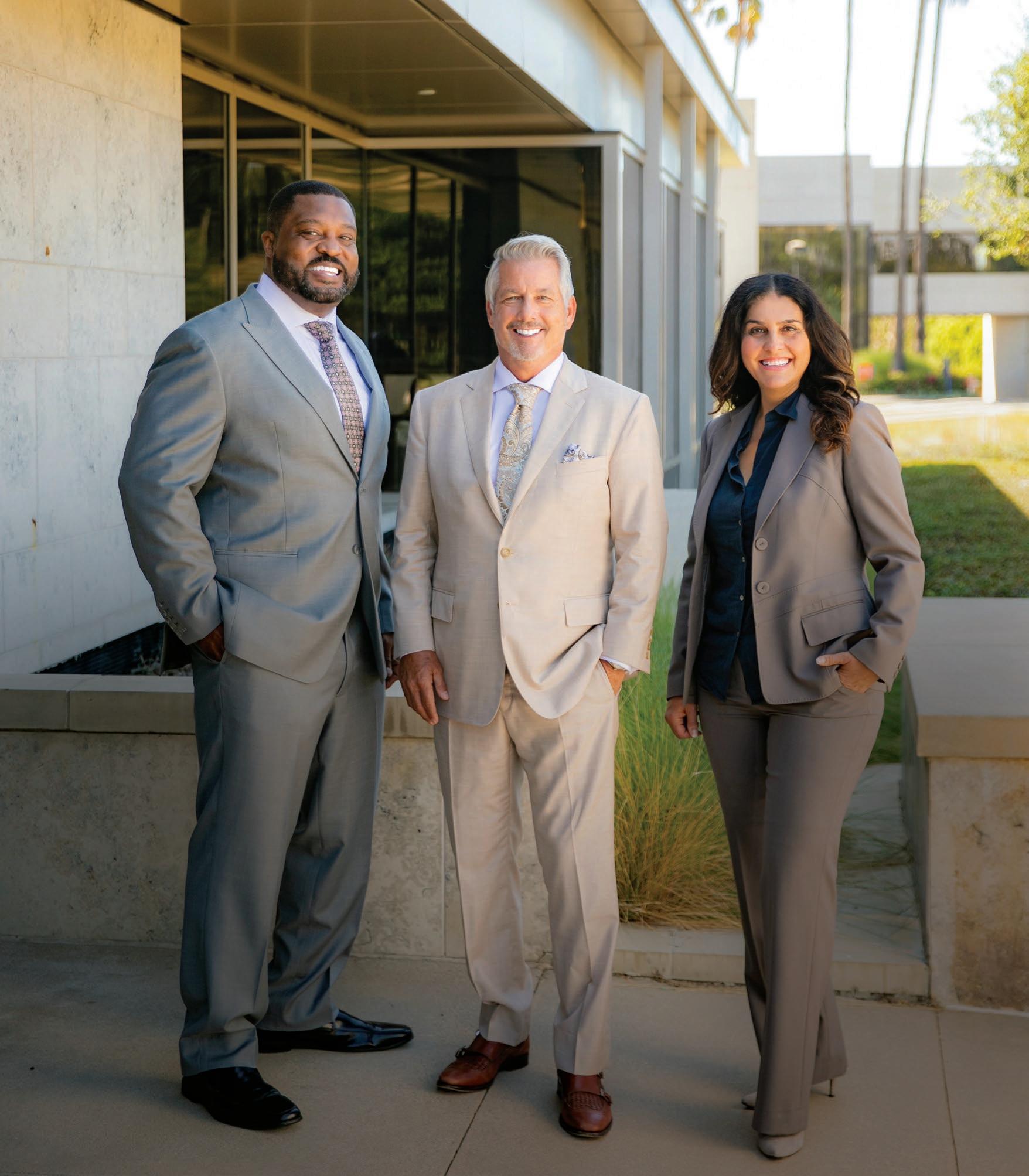

Butterfield Schechter LLP is San Diego County’s largest firm focusing primarily on employee benefit plan and ERISA matters.
“We are definitely a very niche practice area—ERISA/employee benefits and in particular the employee stock ownership plan (ESOP) area. Almost no other local firm does what we do. Almost no others can efficiently do what we do because of the depth of our experience and know-how in our field,” says Marc Schechter, co-founder. That know-how takes years of on-the-job training, a real residency.

Butterfield Schechter LLP was founded in 1998 by Schechter and Robert K. Butterfield. The firm is focused on supporting a broadbased clientele. Corporations, individuals, partnerships, limited liability companies, joint ventures, qualified retirement plans, nonprofit organizations, government agencies, top tier recording and performing musical groups, and professional athletes seek out the firm’s attorneys for top tier performance and comprehensive legal assistance in the areas of employee benefits, tax and corporate law, entertainment law and ERISA litigation.
The casework can be fascinating. For example, Schechter represents a number of groups including those inducted into the Rock and Roll Hall of Fame, including the ground-breaking sixties group Jefferson Airplane and their various group and individual incarnations over the years. Regardless of how many years ago certain music was created, groups such as Jefferson Airplane need legal guidance for use of their music in movies, television, television commercials and so on. “Clients such as these folks are often a bit more interesting simply because of the nature of their work (I received my BA in music) and their legal needs. I’ve had the good fortune to meet some very interesting people.”
 Partners Corey F. Schechter, Marc S. Schechter, and Paul D. Woodard
Partners Corey F. Schechter, Marc S. Schechter, and Paul D. Woodard
Schechter says, “Our areas of focus are something that they don’t really teach in law school. You only learn through experience. And the only way to get experience is to work for people who have done it and particularly in San Diego County—basically that’s Butterfield Schechter.”
The firm has a staff of 20, including new partners Corey Schechter and Paul Woodard. The attorneys work in teams that are supervised, but are not micro-managed by the cofounders. Schechter works closely with three attorneys and support staff while Butterfield works primarily with seven of the firm’s paralegals and support staff.

Schechter says the partners’ management style is “hands off” with supervision. “I’m always interfacing regularly with the staff, but it doesn’t take a lot of supervision to keep things moving efficiently with a highly skilled staff. We don’t even have a managing partner or firm administrator. Our
experience has shown us the more competent the staff is, the less time you need to spend on administrative matters. In addition, our office is a dog friendly and a relaxed atmosphere!”
Butterfield Schechter LLP began with a phone call, but there was a history before that call. Schechter was Butterfield’s law clerk from 1982 to 1984 working exclusively in the ERISA area for one of San Diego’s most prominent tax and estate planning lawyers, Ralph Gano Miller. In 1986, Butterfield left to work at Procopio Cory and Thomas Monson and Ralph Gano Miller decided to offer Schechter a partnership position. That firm subsequently became known as Miller, Ewald, Monson, Hoshaw & Schechter, APLC.
Each attorney was carving out a respectable place in the legal community. Years later, Schechter received a phone call “out of the blue” from Butterfield who was considering leaving Procopio and asked if he had an interest in partnering up to establish San Diego’s premier ERISA/employee benefits law firm. Schechter liked the idea and in 1998 they formed Butterfield Schechter, LLP. Butterfield and Schechter early on established specific and strict guidelines for serving their clients while continuing to succeed as a business in a challenging legal niche:
• Clients, referral sources, and competitors should regard the firm as the community leader.
• The professionalism of staff and the quality of services is to be recognized in the local ERISA community.
• Maintaining a knowledge of ERISA and employee benefits through continued training by attending or teaching courses, keeping up to date with current laws, regulations, and news reports, and striving to always be ahead of the curve.
• Operating with integrity.
• Contributing to the legal community.
• Helping employees realize their full potential and provide a workplace where they are comfortable.
Clients agree that their formula for success achieves equally successful results for those clients.
The firm is in its 25th year as Butterfield Schechter LLP and the two founders have never had a partnership meeting. In a business where the skill of argument is at the core of many legal practices, the partners have never had an argument. The arrangement has proven successful even in an area of law most consumers and even attorneys and judges do not understand or are even familiar with.
“I’m always amazed when I meet with clients about an ESOP and discover that they’re hearing about this option for the first time. Usually, these clients are referred to me by someone else who says, ‘Hey, this is a really complicated part of the law; you should talk to Schechter because he knows just what you need to do.’ The client comes in and they’re often stunned. ‘Wow! I never heard of this! Is it legal?’ they say. Certainly, ESOP sounds too good to be true for some and I blame the ESOP community for historically doing a poor communications job to the business population in general. We’re doing our part to fix that,” Schechter says.
ERISA was passed in 1974 and became effective in 1976. ESOPs were part of that newly enacted law, yet the benefits to employees and owners have often been largely ignored, primarily due to a lack of awareness on the part of business owners and advisors in general. Butterfield Schechter has moved a long way toward changing that trend through ongoing and powerful action in this most-narrow niche, navigating businesses to employee owned.
“In the past four years or so, we’ve started to see what they refer to as the silver tsunami, which is particularly obvious with the baby-boomer business owners,” Schechter says.
Clients who are now in their sixties primarily want to “take some chips off the table” by selling or transferring their business to their employees. They want to retire comfortably and get the value out of the business that they built. However, taking care of loyal employees is often a major factor in their decision making. They look now at the ESOP concept a lot more seriously, because there are significant tax benefits associated with transferring the stock to the employees through an ESOP.
The process of selling to an employee stock ownership plan is complex and poorly understood by most attorneys who just haven’t had the experience of working within that environment.
An independent trustee is required to negotiate the price with the founders, followed by drafting the plan and transaction documents, and the biggest decision, which is whether or not to take that step to becoming an employee-owned company.
Schechter invests more than 50 percent of his time working on ESOP matters. For some companies, it’s very obvious that it would work. For other ones, it takes a considerable amount of research, analysis and decision-making. A total understanding of the law and actual experience in its application is essential in guiding clients in making that decision. The ESOP option is viable in many situations, but in some it is in the client’s interest to seek another solution.
He says, “I’m in my 38th year of practice and I’ve done ESOP work since day one. I’ve always liked the concept because it gives the employees some return on their investment in the business, in addition to just getting their paycheck. It’s a way for employees to share in the value of the business. I’m always proud to see my clients promote their businesses as ‘employee owned.’”
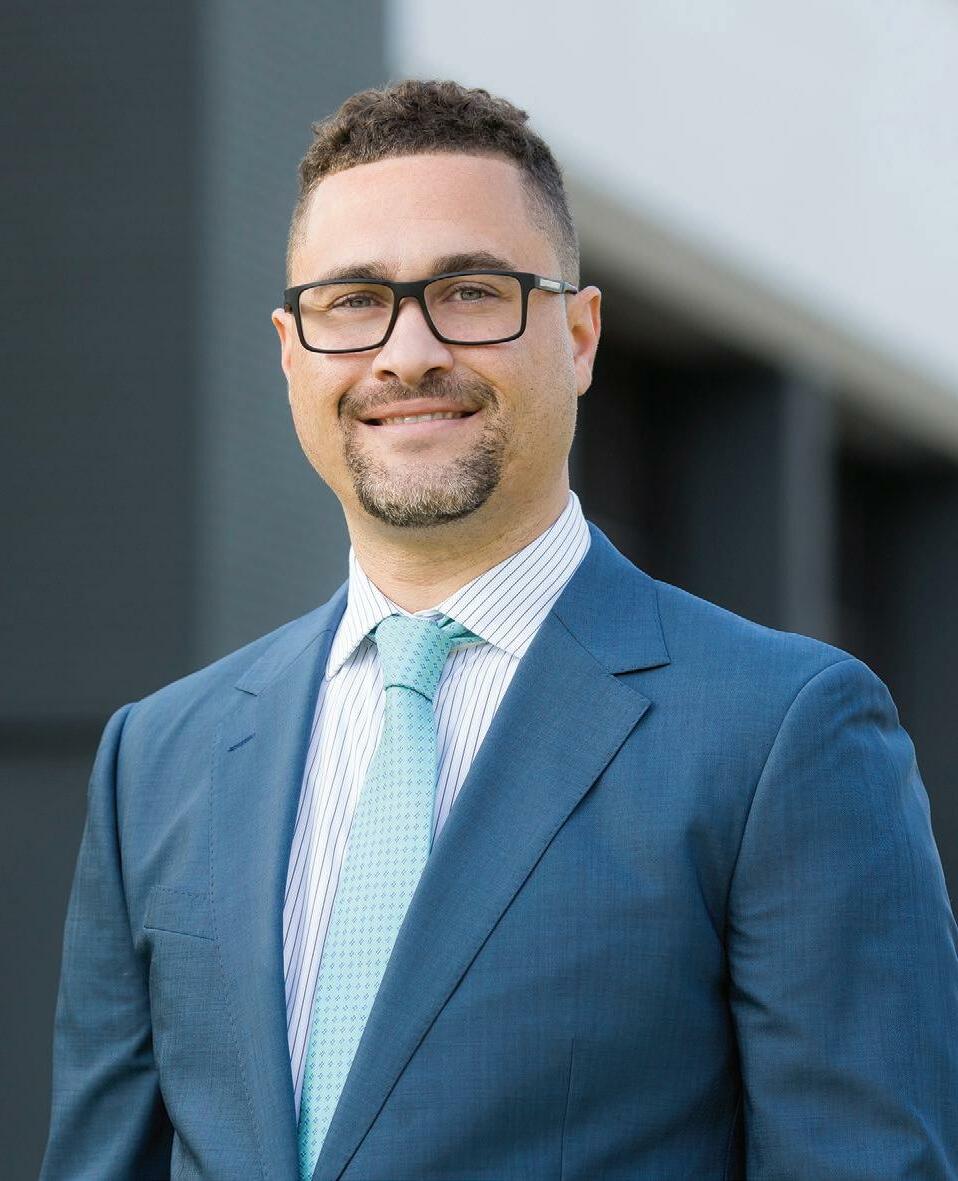
Butterfield Schechter plan for significant growth within the next five years. They have already expanded staff and opened a branch office in Los Angeles.

An essential element in that growth is finding, hiring and maintaining top legal talent that can understand and handle the complexities of the firm’s practice areas, especially ESOP cases. Fortunately, they did not have to look far.
Corey Schechter, Marc Schechter’s son, and Paul Woodard, are the firm’s newest partners. The two have been friends since high school. Woodard even accompanied the Schechters on vacations and was essentially a family member.
Both showed an early interest in a career as an attorney. They attended law school together at Cal Western and were in the same class. After graduation, they practiced at Butterfield Schechter and after about 8-9 years were offered the opportunity to become partners. They are family but definitely paid their dues and earned their positions. “This is an extremely narrow niche field and both men love it. They handle most of the ERISA litigation matters for the firm. Although they have different personalities, they create a nice balance. Corey is quieter and he is an excellent writer.” The younger Schechter has earned his share of great reviews.
“I would highly recommend [Corey] Schechter and his Law firm! [Corey] is very professional, extremely knowledgeable on the law, and is excellent at communicating with his client! [Corey] took the time to explain my case to me every step of the way and fought hard for me to get justice and fairness with my case. I thank God that I was fortunate enough to have him represent me.”—M.S.
Marc says, “Paul is also a good writer, but he also excels at the oral side of matters—arguing in court, negotiating and client contact.” Woodard’s clients are equally impressed.
“I had an extremely complicated case for 14 months with this firm. It will be a study case for future law students. I was very impressed on Paul Woodard’s ability to get up to speed on the facts of my case! Paul is empathetic, open minded and has a positive attitude. He even welcomed my research and contribution without resistance. We worked closely with each other. He is amazing and stopped at nothing to resolve my case in a timely fashion. He is an asset and a valuable employee!”—Cheryl S.
Schechter says, “It gives me great pride to work with these guys together on challenging and complex matters. I will be pleased to see the eventual succession of the firm and our clients in their hands one day. As for me, I intend to continue doing what we’ve become good at, until I can no longer personally keep up with the technology. I lost my wife to cancer two years ago and it changes your outlook. At her request, I grew my hair to donate to chemo patients and will soon do that. And my personal musical endeavors will continue. My daughter, Molly, will soon be starting her last year of medical school. I’m proud of my kids.” n
Marc S. Schechter and his “Pawalegal,” Peanut.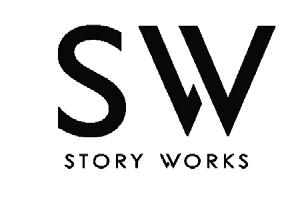
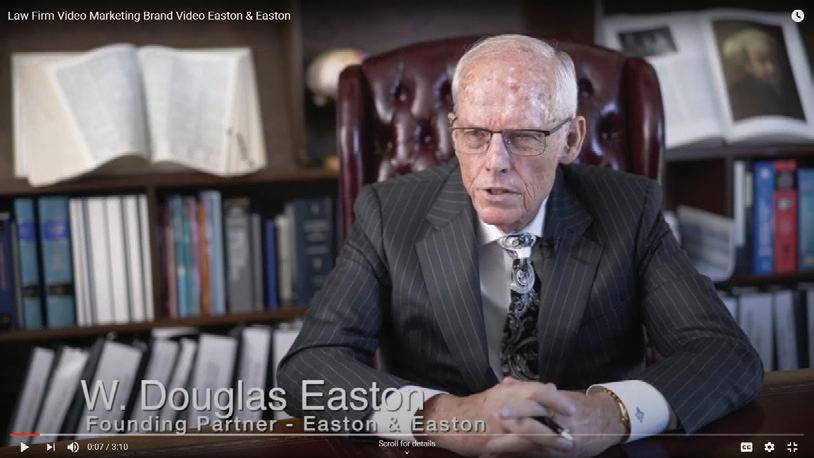


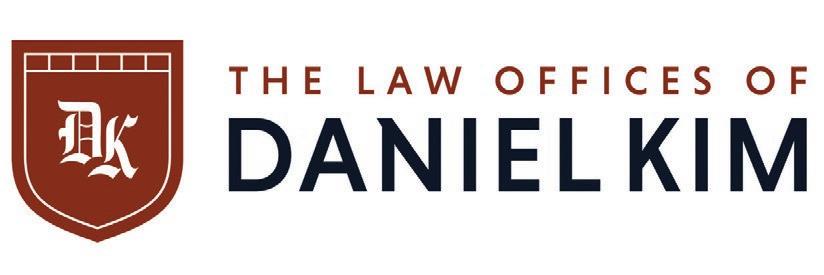

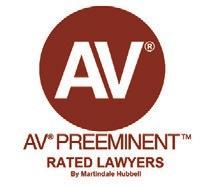
These past few years saw AI soar successfully across the business industry. The legal sector was one of the industries that interacted with AI and continues to do so. And while people have reservations about the role of AI in the law industry, this is fading away quickly with the release of ChatGPT.
The legal sector now has more clarity about the benefits of AI. For example, AI can take over some labor-intensive law firm tasks, saving time and money. However, we still have to ask, should the legal field jump on the AI bandwagon?
In this article, we explore the role of AI in the legal field. We also delve deeper into the benefits and limitations of using AI in the law industry.
According to McKinsey, 23% of the jobs by lawyers could be automated. Law firms are picking up on this and using AI to automate repetitive tasks, complete work faster, and save big.
But what exactly can AI do in the legal field? Ideally, AI relies on big data and computer algorithms to help individuals complete tasks. That said, AI is not yet at the level where it can replace human legal help. It’s more of a reliable partner that helps lawyers increase productivity and accuracy in their tasks.
Below are a few roles of AI in the law industry.
One of the most laborious parts of being a lawyer is legal research. Sometimes, finding the similarities between the current case and an old one can take a couple of hours to a full day.
This is what AI comes in to solve. With the help of AI, legal practitioners can find information about cases, clauses, and specific laws almost instantaneously. What would have taken hours can now take a few mere minutes.
For example, companies such as Ross Intelligence have built research platforms that have a detailed understanding of legal arguments. Hence, lawyers can use such platforms to quickly fill gaps in their legal research.
 by Jeffrey Nadrich
by Jeffrey Nadrich
With AI, lawyers can identify patterns when examining certain legal data. In turn, they can develop their case strategies with informed and accurate information.
On the other hand, lawyers can train AI to simplify legalese into plain English for fast answers and easier interpretation. For example, one Twitter user was able to train an AI model to turn complex legalese into plain English. All he had to do was give the AI two examples, and it provided the rest of the translations successfully.
One other role AI can play in the law industry is document mining and analysis. Specifically, AI can hasten the review of hundreds, if not thousands, of documents to help lawyers identify trends and develop relevant strategies.
AI technology can look through tons of documents without tiring as a human would. It can then categorize the findings and assess each possible solution before providing lawyers with options. Furthermore, AI can also give lawyers a confidence level for each solution.
Lawyers, whether in corporate or law firms, deal with tons of contracts. Reviewing these contracts is time-consuming and often prone to human error. AI can come to the rescue of contract review and analysis. Ideally, law firms can use AI to review contracts for renewal and expiration dates, risks, if any, and legal obligations mentioned in the agreement.
Unlike when reviewed by humans, AI can manage bulk contracts and identify every crucial detail needed to fulfill the legal obligations outlined in the contract. Here’s how this can play out.
A law firm relies on an AI platform for contract review and analysis:
• If the contract meets specific criteria, approve it for signature and approval
• If the contract has certain risks, send it to the risks department for further review
• If the contract has automatic renewal clauses, notify the relevant person a month before the renewal
• Send an analysis of signed contracts in the last quarter of this year on the first Tuesday of a new quarter
As you can tell from the above examples, AI can handle contract review and analysis automatically while capturing all the crucial details without fail.
One AI platform that handles automatic and bulk contract reviews is Kira Systems. The platform enables lawyers to identify, extract and analyze information from a large batch of contacts. With such a system in place, law firms can have the guarantee that nothing critical is left out when handling their client’s contracts and businesses.
In another example, JP Morgan, in 2017, used a software program known as COIN to interpret commercial loan agreements. What previously took lawyers 360,000 hours could now be completed in minutes.
Knowing, or at least having a good idea about whether a client can win a case or have it settled in their favor, is critical for every lawyer. After all, when lawyers have a prediction about how a case will run out, they can know whether to go to trial or settle before trial.
Case prediction also enables lawyers and their clients to understand how much a case will cost and whether the time investment is worth it. For a long time, law firms’ predictions came from experience and manual research. But with AI spreading like wildfire, lawyers can now have more accurate case predictions.
AI reviews hundreds or thousands of past cases in and outside the law firm. Then, the AI platform provides a pattern and probability of a case’s outcome.
Such a platform enables lawyers to be more confident as they prepare to handle their clients’ issues since they can accurately predict how a case will turn out.
On November 30, 2022, OpenAI, a for-profit company, launched ChatGPT. The launch soon became a hot topic on social media platforms like Twitter. After all, this sophisticated chatbot was touted as capable of telling jokes, writing poems, creating software code, and answering questions in human-like form. It was almost as if you were talking to an all-knowing, omniscient genius.
Within one week of its launch, ChatGPT hit 1 million users. ChatGPT is still a hot topic, and it doesn’t look like it will slow down soon. So how can this AI solution affect the law industry?
ChatGPT is an AI chatbot trained to provide answers in a human-sounding and conversational form. This AI model has been trained using both machine learning and human intervention. Specifically, the team at OpenAI relied on a training method known as reinforcement learning from human feedback (RLHF). This training has made ChatGPT a flexible model with answers to almost any question. Users can ask the model to write a blog post, software code, or translate text.
ChatGPT’s most vital point against other AI models is how it answers questions. First off, the answers are more conversational and human-sounding. It can also provide more context within a response based on the previous questions you had asked and the solutions it gave.
In addition, ChatGPT is more conscious of the answers it gives. For example, this AI model can refuse to answer a question if it thinks the question is derogatory, racist, sexist, homophobic, harmful, or encourages illegal activity.
While ChatGPT is incredible in what it does, it still hasn’t reached its prime time. The creators of OpenAI have warned that the model may sometimes provide inaccurate answers. Moreover, ChatGPT will tell you it doesn’t know the answers to specific questions. For example, the model cannot answer any inquiries linked to events happening in 2021 and beyond. Since it’s still in the early research phase, ChatGPT may also provide inaccurate answers.
There’s also the issue of copyright and plagiarism when using ChatGPT to create commercial content. That said, ChatGPT has achieved an impressive feat while still in its early stages. The AI model can and will touch every industry, the legal sector included. Here’s how ChatGPT features in the legal field.
The legal industry has already started testing ChatGPT to understand how it can solve legal issues. For example, one lawyer demonstrated on a TikTok video how ChatGPT created a will for a Texas couple. On the first try, the chatbot failed to include two witnesses as required by Texas law. When the lawyer asked ChatGPT to correct the mistake, it did and provided an updated draft. According to the lawyer, the draft was not far off from what’s legally acceptable. In another video, a lawyer tested ChatGPT and showed this AI model creating a detailed contract draft with a brief explanation accompanying the draft.
Here’s another example of chat GPT providing a detailed answer to a wrongful death claim. It takes all the previous questions the lawyer had asked before and applies them to the current legal question. This is impressive since the AI model acts as an omniscient human would, providing contextual knowledge, giving clear examples, and presenting it all in a conversational tone.
As ChatGPT develops further, we expect to see more lawyers and legal firms adopt this AI technology. And why not? ChatGPT has the potential to help lawyers cut the time it takes to perform laborious tasks to mere seconds. In turn, law firms can cut costs and free up lawyers to perform more high-impact functions for clients.
Let’s examine a few examples of how law firms and their clients can benefit from ChatGPT.
ChatGPT can be developed into a high-level chatbot with detailed and factual answers to clients’ most common and repetitive responses. Thanks to its conversational tone and ability to contextualize answers based on questions asked, it would work exceptionally well.
Legal research is one more task that ChatGPT could help automate and speed up. Chat GPT can provide:
• Law clauses.
• Examples of legal situations.
• Mostly factual answers, depending on a country’s or state’s law.
Moreover, you can ask ChatGPT follow-up questions without going into much detail, and it will still provide valuable answers.
From our previous examples, you know that ChatGPT can create legal documents in seconds. This AI model can generate everything from wills to contracts to Non-Disclosure Agreements (NDAs). AI taking over the drafting of legal documents can save a firm time, reduce errors, and streamline the entire process.

Finally, ChatGPT can come in handy for document review and analysis. With this technology, law firms can review large batches of contracts and documents in minutes. They can further uncover patterns and solutions from the information examined to discover the best course of action.
While AI has many incredible benefits, it’s not a perfect system by any means. Currently, one primary concern surrounding the use of AI is ethical and accountability issues. For example, who will be at fault if AI provides a client with information that leads to harm, loss, or a negative side effect?
Unfortunately, this is not clear as there are also not enough regulatory measures taken to handle such issues. More importantly, AI is not prepped for matters such as equity judgment and dealing with complexities that arise during a case. AI might also provide nonfactual and biased responses.
ChatGPT is beneficial to both lawyers and the everyday person. For lawyers, ChatGPT provides automation, easy access to research, and accurate prediction for different cases. More importantly, AI saves a legal firm time and resources and enables legal teams to provide higher-quality services to their clients.

On the other hand, ChatGPT makes legal help highly accessible to low-income individuals. According to a 2022 report by the Legal Service Corporation, 92% of low-income Americans fail to receive enough help for their substantial legal problems. ChatGPT can change this. Through this AI tool, Americans can access insights and advice for pressing legal issues and know how to act.

ChatGPT and most other AI tools are not out to get lawyers’ jobs. Instead, these technologies act like partners that can help legal professionals work faster, better, and more accurately. As ChatGPT is developed further, we will continue to see its spread and use in the legal profession. n
Jeffrey Nadrich is the principal partner at Nadrich & Cohen Accident Injury Lawyers, a statewide personal injury, defective products, dangerous drugs, defective medical device, and dangerous chemicals law firm. Mr. Nadrich is an experienced, nationally-recognized, well-known plaintiff’s personal injury contingency lawyer who is a relentless advocate for victims. He has been known throughout his legal career as a relentless litigator. Learn more at: personalinjurylawcal.com.



Conventional wisdom says lawyers should be speaking at industry events and conferences to build their prominence, their authority, and their books of business.

But if you’re a prolific and consistent creator of thought leadership content, do you need to be speaking at industry events like conferences to achieve these goals?
I’m not so sure you do.
If you’re a lawyer who consistently produces thought leadership content that’s calibrated to your target audience, you should be asking yourself whether you need to speak at industry events anymore.
Or, more specifically, can speaking at industry events provide you benefits that your content isn’t providing you already?
When I compare speaking at industry events to ongoing consistent, prolific thought leadership content creation, I see benefits that you get from consistently creating content that you won’t get from speaking at events.
First, there’s the frequency. If you were pumping out blog posts a couple times a month; a weekly, biweekly, or monthly podcast; and/or videos at a similar clip, you’d be getting more bites at the apple than you could get by speaking at industry events.
Even when factoring in virtual events and webinars, if you’re a consistent and prolific content creator, you are almost always going to get more chances to get out in front of your audience when you are creating content than if you are speaking at industry events. There are only so many industry events you could speak at in a given year.
Second, with respect to your audience, there’s a good chance the audience you’re speaking to online is going to be bigger than your audiences at industry events.
If you think about all the ways you can disseminate your thought leadership content through third-party publications targeting the legal industry or the industries served by your clients, or through your law firm’s email blasts, you are almost certainly going to be reaching more people cumulatively than if you’re speaking at industry events.
Third, there’s the permanence of your content. When you produce a blog post, article, client alert, video, or a podcast and people are searching for you, or they’re searching for a topic you’ve covered, or they’re browsing and they somehow come across your content, your thought leadership content gets found. That’s because it is living on the internet and is discoverable by anyone on it.
When you speak at industry events, the presentations you give are ephemeral and probably not discoverable online down the road. Maybe they’re recorded and posted online, and maybe your slide deck will be posted online too. But even if they were, it is not likely to be done in a way that makes them as discoverable as your blog posts, videos, and other pieces of content.
Consistent, prolific content creation can provide lawyers more— and better—opportunities to build their prominence and their books of business than speaking at industry events.
While prolific and consistent content creators will likely benefit more from thought leadership content creation than from speaking at industry events, occasional content creators will not.
Occasional content creators probably do not have established robust content distribution networks because they’re not consistent and serious about their content creation and distribution and/or haven’t spent the time to build up their followings.
If a content creator is not leveraging JD Supra or Lexology, is not getting published in third-party publications, only occasionally posts on LinkedIn to their 200 followers, and they’re otherwise not making an effort to be found by their target audience, they’re unlikely to have their content seen by more people than would see them speak at industry events.

Also, occasional content creators are unlikely to be as efficient as prolific creators.
Prolific content creators have their creation process down to a science (at least to them). They can easily pump out thought leadership content within a few hours that can last them weeks if they (or their colleagues) are ardent repurposers of their content.
I’m not advocating that attorneys skip industry events entirely. These events provide important networking opportunities, opportunities for serendipitous conversations to take place, and opportunities to spend quality time with clients and referral sources.
My point is that attorneys may not need to focus as much on speaking at industry events as conventional wisdom says they should given the benefits that consistent, prolific content creation can provide.
(There will be people who say that if during COVID attorneys were able to network virtually via Zoom, LinkedIn, and other tools, they can do it again even with in-person events back in the picture. I don’t disagree with them. But in-person networking should not be avoided if possible given the magical relationship-building benefits of face-to-face interactions.
If you create, publish, and distribute a consistent stream of thought leadership content, will you reach more people through that content than you would by speaking at an industry event?
Could you avoid spending time and energy preparing for speaking opportunities at industry events because the content you’re consistently creating is building your thought leadership, your authority, and your prominence in the eyes of your audiences by living on the internet and being discoverable?
For certain lawyers, the answer is “Yes!”
It might seem crazy to not actively attempt to speak at every industry event your target audience will attend in favor of consistently producing blog posts, articles, videos, podcasts, and other forms of thought leadership content.
This can make their content creation efforts more efficient than speaking at industry events when factoring in travel time and the time needed to create presentations for each speaking opportunity. But occasional content creators will likely find it more efficient to occasionally travel to and prepare for a speaking opportunity than to consistently churn out content.
Of course, there’s something to be said about the return on investment of content creation versus speaking engagements. If it takes three times as long to consistently create thought leadership content than it does to travel to and prepare for speaking opportunities, but an attorney sees five times as many business development opportunities or five times as much revenue from their content efforts versus speaking opportunities, it is easy to see which path the attorney should continue down.
But given the frequency, reach, and permanence of those types of thought leadership content, for consistent and prolific content creators, the crazy thing to do might be to focus on speaking opportunities at the expense of continuing to build their authority and audience by building their libraries of content. n
Wayne Pollock is the founder of the Law Firm Editorial Service. The Law Firm Editorial Service sets free the knowledge and wisdom trapped inside Big Law and boutique law firm partners by collaborating with them to strategize and ethically ghostwrite book-of-businessbuilding marketing and business development content. Learn more at: www.lawfirmeditorialservice.com.
“...occasional content creators are unlikely to be as efficient as prolific creators.”




